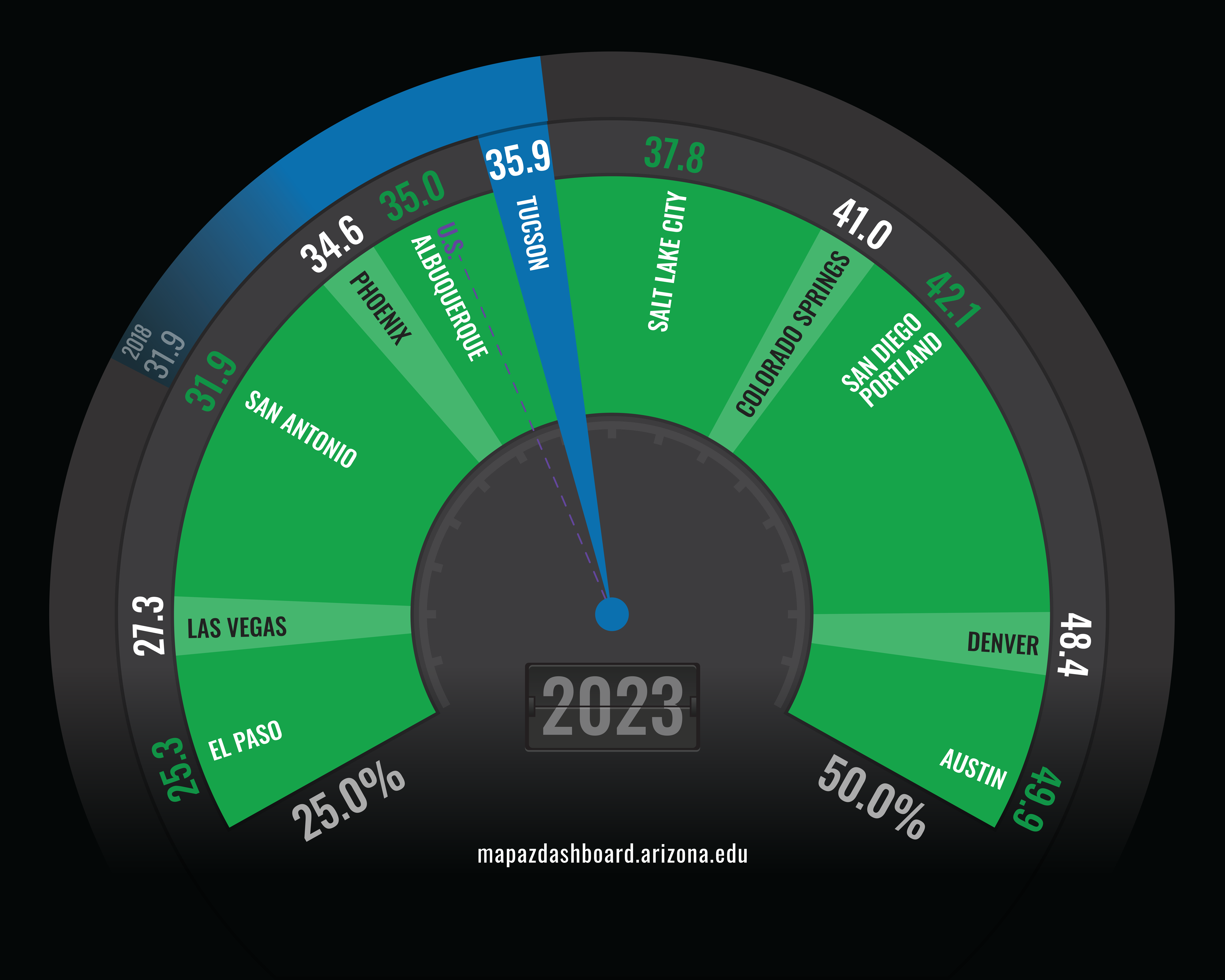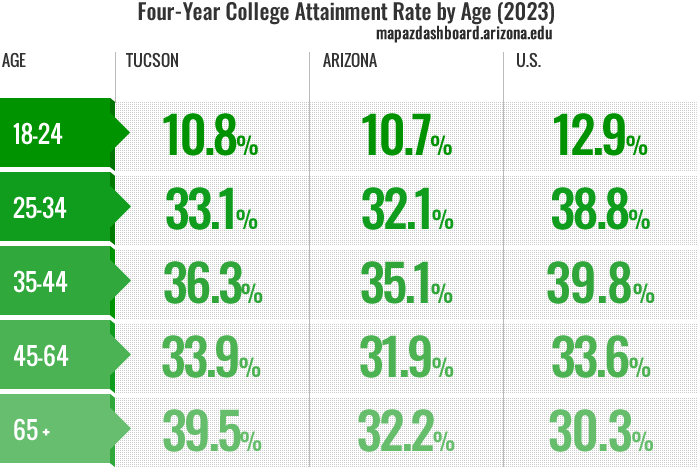 Learn About Educational Attainment Rates in Tucson, Arizona MSA
Learn About Educational Attainment Rates in Tucson, Arizona MSA
How are we doing?
Four-Year College Attainment Rate (2023)

The four-year college attainment rate in the Tucson Metropolitan Statistical Area (MSA) was near the middle of the pack in 2023, compared to 12 peer western MSAs. The share of the population age 25 and older with a Bachelor’s degree or more was 35.9% in Tucson. That was far below the Austin MSA, which ranked first at 49.9%, but well above the El Paso MSA, which ranked last at 25.3%. Tucson’s four-year college attainment rate has increased by 4.0 percentage points since 2018.
Why is it important?
Educational attainment is one critical driver of long-run income, job, and population growth for nations, states, and local areas. More broadly, regions with higher concentrations of highly educated residents tend to perform better across many socioeconomic indicators, including the crime rate, poverty, productivity, unemployment, and others. In addition, less educated residents also tend to earn higher wages in regions with a larger concentration of college graduates.
How do we compare?
In 2023, the Tucson MSA had a relatively small share of residents who reported a high school degree as their highest education level (21.2%) compared to the U.S. (26.2%). In contrast, Tucson posted a relatively large share of residents with some college education, but no degree (23.9%) compared to the nation (19.4%). Further, Tucson had a large share of residents with a graduate or professional degree, at 15.5%, compared to 13.7% for the U.S. In part, this reflects the presence of the University of Arizona in Tucson.
Educational attainment rates vary significantly by race and ethnicity. College attainment rates were highest in 2023 for Asian residents of Tucson, the state of Arizona, and the U.S., while rates tended to be lowest for American Indians, Hispanics, Native Hawaiian Pacific Islanders, and other races. The college attainment rate for Hispanic residents in the Tucson area was 19.7% in 2023, well above the Arizona rate and almost equal to the national rate. However, the college attainment rate for Hispanics in Tucson was far below the rate for white, non-Hispanics at 44.4%.
College attainment rates also vary strongly across age groups. In 2023, the share of residents with a Bachelor’s degree or more in the Tucson MSA was highest for the 65-and-older age group, at 39.5%. The college attainment rate for young working-age Tucson residents (ages 25-34 and 35-44) was below the national average in 2023, while for the 65 and older age group, Tucson’s college attainment rates were higher than the national average. In part, this reflects retiree migration to Tucson, which has favored more highly educated individuals.

What are the key trends?
The Tucson MSA college attainment rate has increased since 2000, but the pace of growth was relatively slow. Tucson’s college attainment rate rose from 26.7% in 2000, to 35.9% in 2023, an increase of 9.2 percentage points. That was slower than the increase set by the U.S.
How is it measured?
Educational attainment reflects the share of the population age 25 and older with a given level of education. Respondents report the highest level of education completed. The data come from five-year estimates for 2009, 2018, and 2023 from the U.S. Census Bureau’s American Community Survey (ACS). Note that the ACS five-year estimates are a rolling survey taken over five years, therefore, they are only comparable on a five-year interval. Data for 2000 are drawn from the 2000 Census Summary File 3.












